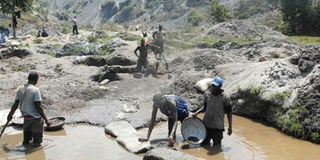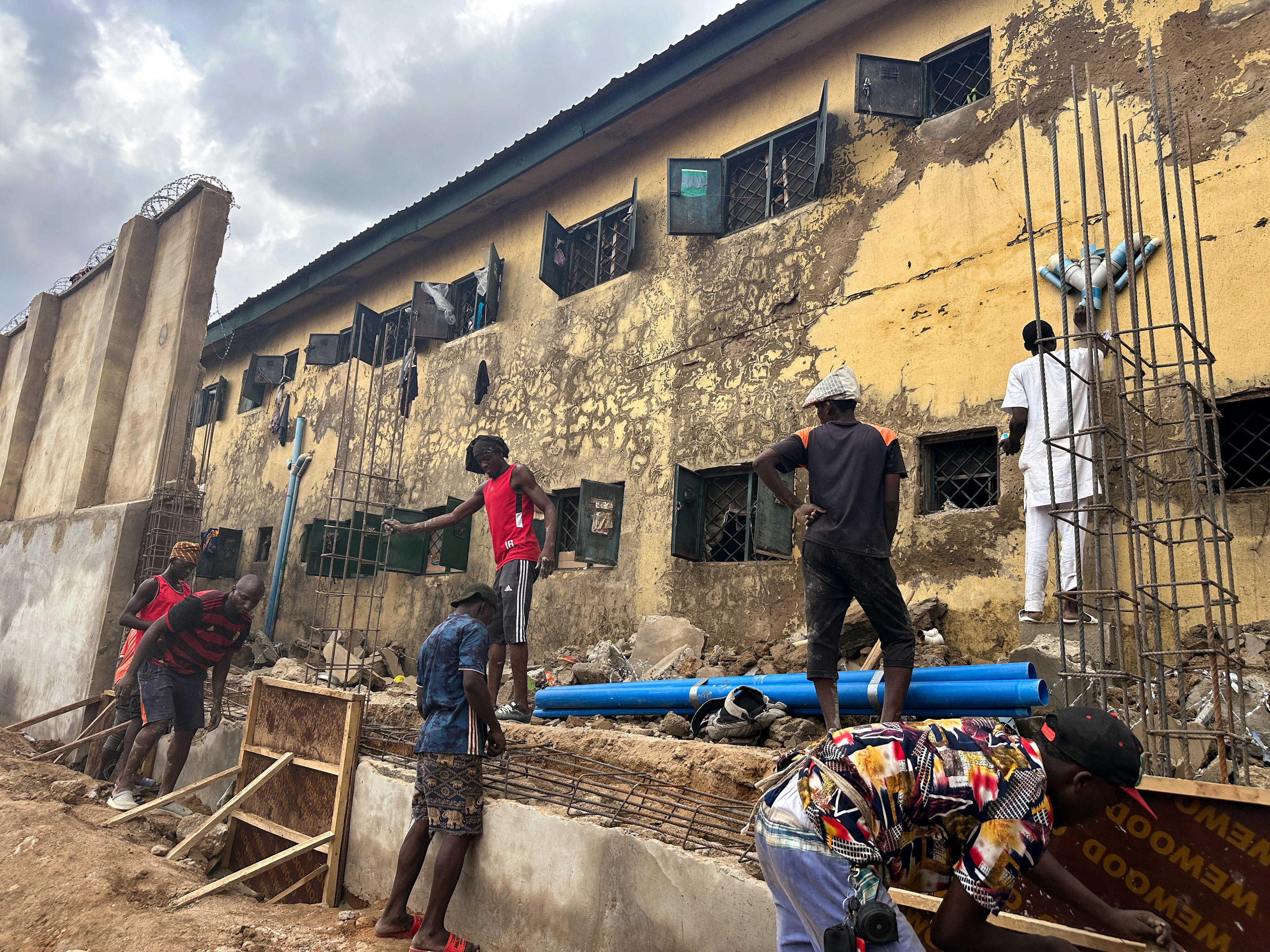Wolfram mining spurs growth in Rubanda

Mining. Artisanal miners in Nyamuriro mines sieve wolfram ore using water to extract wolfram in Rubanda District. PHOTO BY ROBERT MUHEREZA.
What you need to know:
- Employment. Initially, locals had deserted mining because of the small pay but ever since new investors took over and increased payment, now everyone is abandoning other activities to make quick money from wolfram mining.
RUBANDA.
The ongoing mining in Nyamuriro wolfram mines in Rubanda District has become a major source of income for the locals in the area.
At least 800 people are currently employed in the mines that cover 175 hectares. Mr Manuel Baryamwisakyi, 46, a resident of Bugunga village and a wolfram miner for 20 years, says because of good pay from the miners, living standards have gone up.
The mines were revived in December last year after the takeover by KI3R Minerals Ltd, a UK company from Krone U Ltd.
Immediately, the new management increased the pay for a kilogramme of wolfram from Shs7,000 to Shs100,000 and pays the miners promptly.
“In the last seven months, I have been able to make about Shs20m because I get about Shs100,000 per day from mining wolfram,” Mr Baryamwisakyi brags.
He adds, “I have used part of this money to build myself a permanent house, taken my children to the best private schools in the area, bought two heifers to provide enough milk for my family and hired a piece of land where my family members plant irish potatoes. I expect to earn millions of money after harvesting them.”
Mr Philipo Kururagire, the chairman of wolfram miners at Nyamuriro mines explains that the pay increment has attracted many miners back into the mines business.
“Local miners that had deserted the wolfram mines, are slowly coming back due to attractive pay. They are organised in groups of three to six members and they are now happy because on average, each group earns about Shs100,000 per day. They are 150 groups,” Mr Kururagire says. The good pay of the miners has enabled many of them to construct permanent houses.
Equally, the trading centres surrounding the mines have had their structures improved and the miners are taking children to good schools.
No employing children
Given the booming mining in the district, Rubanda LC5 chairman, Kenneth Jogo Biryabarema, has since cautioned the investors to avoid employing underage children as cheap labour. He also wants investors to quickly look into the issue of availing their staff with protective gears.
“I am happy that the investors are employing our people from within the communities. The investors must avoid issues of child labour in their mines,” Mr Biryarema cautions.
“We have written to relevant authorities in the Ministry of Energy seeking for guidance on how the district administration can directly benefit from the revenue generated from the wolfram mines,” he adds.
The secretary for natural resources at Rubanda District council, Ms Adrine Tibenda, says whereas wolfram mining has boosted the economy of the area, both investors and community members benefiting from it should be reminded of their role in conserving the environment.
The general manager of KI3R Minerals Ltd, Mr Donat Kankonde, says plans are underway to replace all the old protective gear with new ones that have already been procured.
He adds that they are using heavy duty tractors to dig trenches around the wolfram mining area for miners to easily identify wolfram layers instead of guessing as it has been in the past.
“We are ready to support our staff by paying them promptly so that they can always remain motivated. Every day we pay Shs15m to the wolfram miners after presenting the mined wolfram to our stores at Nyamuriro wolfram mines,” Mr Kankonde notes.
All the miners that enter and leave the mining area are registered every day as a measure to ensure no one goes missing, according to authorities.
Mr Kakonde says plans are underway to establish a health facility with support from district authorities to provide first aid in case of any injuries.
Additionally, Mr Vereriano Musinguzi, the public relations officer of KI3R, says wolfram mining has improved agriculture because some miners invest the money earned from mining to agriculture by practicing modern farming such as buying improved agricultural seedlings and applying fertilisers.
Mr Musinguzi adds that mining wolfram requires one to have a mining skill, hammer, chisel, torch, protective gear and a utensil in which to carry the mined mineral. The mined material is crashed into small pieces using a hammer and then placed in water to remove unwanted soil particles before the fine particles of wolfram are picked.
He observes that standard of living in the eight villages of Kakanga, Bisiizi, Rwamurindwa, Kyibungo, Bugunga, Kabindi, Katasa and Katanga that are neighbouring wolfram mines, has since greatly improved.
This has led to erection of shopping centres, cottage industries involved in milling cereals and baking of cakes. The proprietors are taking advantage of the extended hydro power lines tapped from the national supply line.
The finance controller at KI3R Minerals Ltd, Mr John Wambi, reveals that the company took over the management of Nyamuriro wolfram mines after paying about $4m to Krone U Ltd, a company that owns the lease of mining wolfram in the area.
Krone Uganda limited had operated the mines for about 15 years. Since they took over in December, Mr Wambi says, they have been paying Shs50m per month to government as royalties.
Mr Wambi adds that they have been able to pay workers well, in addition to paying government taxes because they have ready market of wolfram in Europe and America.
“Plans are underway to construct a multi-billion wolfram processing factory in Kigezi sub-region to create employment for over 5000 people in both causal and technical positions,” he says.
“Once the processing factory is built, we shall be able to export processed wolfram than the current trend where we are exporting it in a raw form. We spend much money on transportation because the mineral is bulky,” he notes.
Mr Wambi says Kigezi sub-region is strategically positioned, enabling wolfram from the Democratic Republic of Congo and Rwanda to be easily transported to the processing factory once established.




